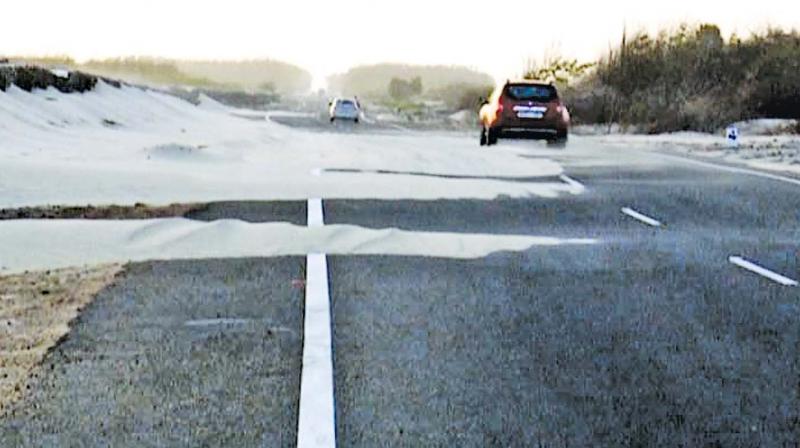Shifting sand dunes eat into new Rameswaram-Dhanushkodi highway
The sand dunes during these seasons tend to move in north-south direction and vice-versa, depending on the wind direction.

Rameswaram: With the onset of the Southwest monsoon season (rains hit Kerala coast on Saturday), shifting sand dunes in the southern part of the pilgrim-island is posing a threat to the new spanking Rameswaram-Dhanushkodi highway; they may not only weaken the bitumen, but also pose a severe hazard to increasing cars and other vehicles carrying tourists and pilgrims on that stretch.
The strong monsoon winds push the sand dunes, particularly along the seashore in the Gulf of Mannar side, says Navaneethan, a resident of Dhanushkodi. The recent NH extension right up to Dhanushkodi has begun to attract a large number of tourists and pilgrims, who now drive up to the island's north-eastern tip; but the sand having spilled onto the road makes commuting irksome, even risky.
The sand dunes during these seasons tend to move in north-south direction and vice-versa, depending on the wind direction. The sand dunes, spread over an area of eight hectares between Pamban and Othhapatti, are particularly subject to this shifting process, say locals.
In earlier days, a good amount of casuarina trees were grown. The trees contained the movement of sand dunes as its leaves would completely cover the sandy bed like a carpet, resist the winds and thus minimize the shifting of sand. But in the absence of the trees now, the stretch between Kothandaramar Swamy temple and Mukundharaya Chatram in particular, has become very vulnerable to shifting sands, which then spill over onto the National highway.
Despite protective side-walls to check sea erosion having been provided along the NH stretch here, large quantities of sand have still surmounted these walls and have begun to collect in sizeable quantity on the new road. This, if unattended, could result in most of the new road getting buried under the sand, fear locals.
The Highways department should not only use machinery to clear the sand frequently to make the road safe for people, but also plant casurarina saplings along the NH to Dhanushkodi to contain this phenomenon, plead locals.

